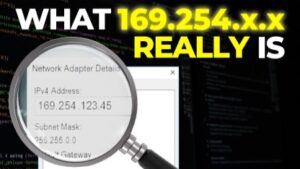Packet Tracer file (PT Version 7.1): https://bit.ly/2sO7QBV
Get the Packet Tracer course for only $10 by clicking here: https://goo.gl/vikgKN
Get my ICND1 and ICND2 courses for $10 here: https://goo.gl/XR1xm9 (you will get ICND2 as a free bonus when you buy the ICND1 course).
For lots more content, visit http://www.davidbombal.com – learn about GNS3, CCNA, Packet Tracer, Python, Ansible and much, much more.
#CCNA #PacketTracer #CCENT
Subnetting allows you to create multiple logical networks that exist within a single Class A, B, or C network. If you do not subnet, you are only able to use one network from your Class A, B, or C network, which is unrealistic.
Each data link on a network must have a unique network ID, with every node on that link being a member of the same network. If you break a major network (Class A, B, or C) into smaller subnetworks, it allows you to create a network of interconnecting subnetworks. Each data link on this network would then have a unique network/subnetwork ID. Any device, or gateway, that connects n networks/subnetworks has n distinct IP addresses, one for each network / subnetwork that it interconnects.
In order to subnet a network, extend the natural mask with some of the bits from the host ID portion of the address in order to create a subnetwork ID.
An IP address is an address used in order to uniquely identify a device on an IP network. The address is made up of 32 binary bits, which can be divisible into a network portion and host portion with the help of a subnet mask. The 32 binary bits are broken into four octets (1 octet = 8 bits). Each octet is converted to decimal and separated by a period (dot). For this reason, an IP address is said to be expressed in dotted decimal format (for example, 172.16.81.100). The value in each octet ranges from 0 to 255 decimal, or 00000000 – 11111111 binary.
Here is how binary octets convert to decimal: The right most bit, or least significant bit, of an octet holds a value of 20. The bit just to the left of that holds a value of 2^1. This continues until the left-most bit, or most significant bit, which holds a value of 2^7.
Transcription:
This is a practical IPv4 subnetting lab.
Now this is a practical lab helping you test and verify your knowledge of IPv4 subnetting. We’re not simply going to talk about the theory of IPv4 subnetting. You need to subnet but in addition, configure the network and get it working. You need to configure IP addresses on routers, on switches and on DHCP servers. And then you need to configure the DHCP servers to allocate IP addresses to the clients in the correct subnet.
So once again, this is a practical demonstration and lab of IPv4 subnetting.
In this packet tracer lab, we have a multiple sites, site 1 and site 2 connected via serial links to an Internet router.
You need to configure the network as follows.
You’ve been allocated subnet 192.168.1.0 /24 and you need to subnet this network into 4 subnets as follows.
Subnet 1 needs to be allocated to site 1
Subnet 2 to the serial link between router 1 and the Internet router
Subnet 3 to site 2 and subnet 4 to the link between router 2 and the Internet router.
Now we are not going initially optimize the subnetting.
You’re only going to create 4 subnets and then split them across these 4 networks.
In the subsequent video will optimize the serial links to use a /30 mask and then make more subnets available for additional sites. But in this initial topology, you simply need to create 4 subnets. You should configure the routers per the instructions in the diagram. In other words, this interface on router 1 should use the last IP address in the relevant subnet. This interface should use the first IP address in the subnet on the serial link. The Internet router is going to use the last IP address in both subnets on the serial links and router 2 will once again use the last IP address in the subnet on the Ethernet interface and to the first IP address on the serial interface.
You need to configure these switches with the second last IP address and the subnet and the DHCP servers with the third or last IP address in the subnet.
So as an example, at site 1, the switch 1 should be configured with the second last IP address in the subnet and the DHCP server with the third last IP address. The same should be done for switch 2 in site 2, and the third last IP address should be configured on the DHCP server at site 2.
You also need to configure the DHCP servers to allocate IP addresses to the clients in the relevant subnets.
So as an example, DHCP server 1 should allocate IP addresses PC 0, PC 1 & PC 2 in the subnet allocated to this network….














